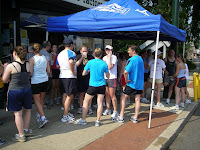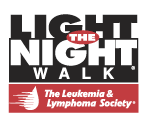Our Northern New Jersey Head Running Coach Bill Gahwyler and myself recently took a Coaching Class with the Road Runners Club of America (RRCA). It was a pretty intensive two day class down in Maryland.
The coach was taught by Mike Broderick and Janet Hamilton of Running Strong. Mike is a coach and personal trainer with the National Strength & Conditioning Association, a member of the American College of Sports Medicine and National Strength Professionals Association. While Janet is a Registered Clinical Exercise Physiologist (RCEP) with American College of Sports Medicine (ACSM) and Certified Strength and Conditioning Specialist (CSCS)
with the National Strength and Conditioning Association as well. So they both had lots to offer.
We went through a lot of the regular information on sports science, the basics of overloading and specificity, physiology, nutrition, injury prevention and psychology. The second day was spent putting training programs together for athletes preparing for marathons.
There were many pearls of wisdom I learned from the weekend, which I'd love to share on this blog over the next few weeks, but in summary:
- muscle, circulatory, pulmonary, skeletal and neurological systems are all trainable, but at different rates.
- you will get faster without running faster due to adaptation (at least for the first few years of your running career).
- look for the perpetrator of the injury, not the victim - e.g. IT Band trouble often caused by tight hamstrings or gluts, not by the IT band itself.
- the value of association while you are running - turn off the iPod and listen to your body every now and again.
- train at your current fitness level, not your target level - adaptation will help you get there.
- be wary of drugs that effect energy systems - benedryl, insulin, NSAIDs, Acetaminaphine.
"Do not believe in anything simply because YOU have heard it. Do not believe in traditions because they have been handed down for many generations. Do not believe in anything because it is spoken and rumored by many. Do not believe in anything simply because it is found written in your books. Do not believe in anything merely on the authority of your teachers and elders. But after observation and analysis, when you find that anything agrees with reason... then accept it and live up to it" - The Buddha
Blogging again soon.
Coach David.












